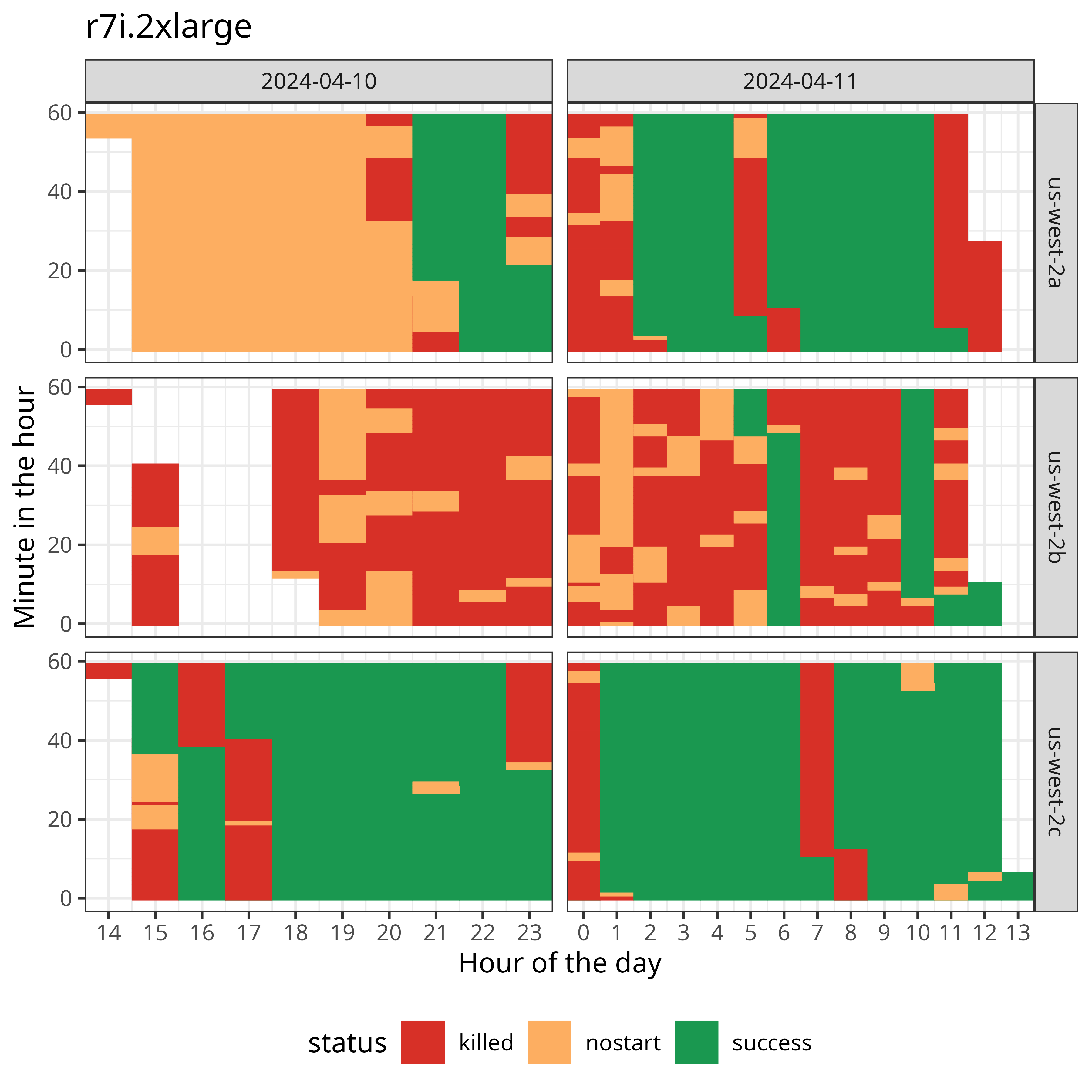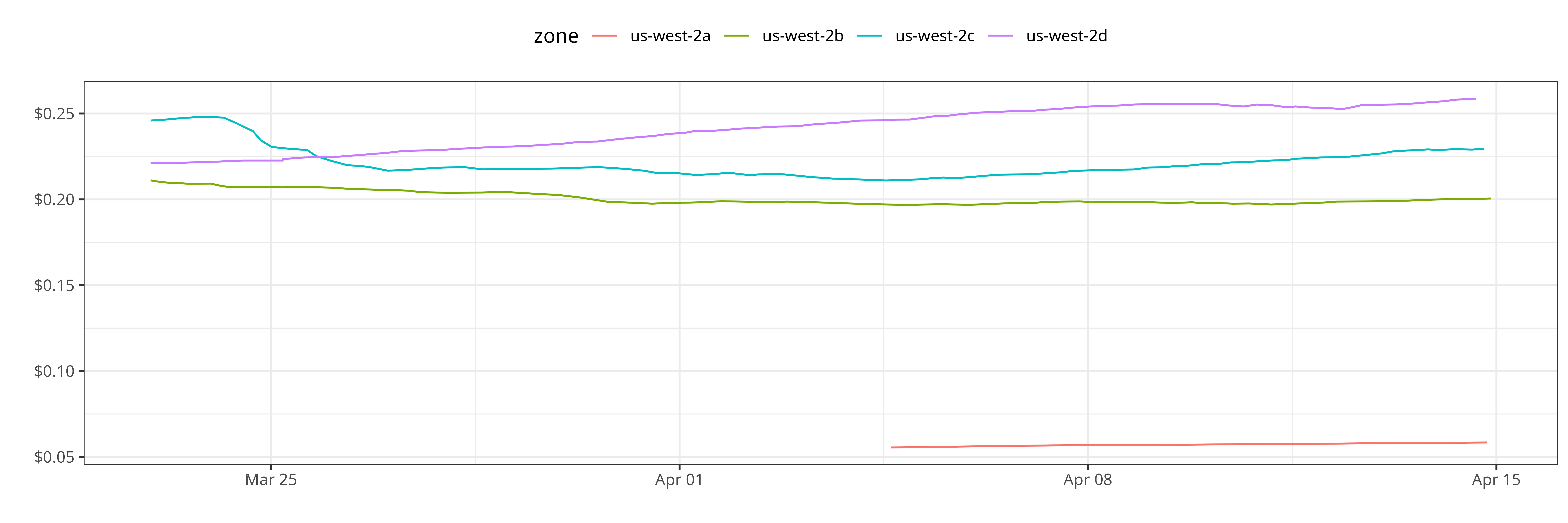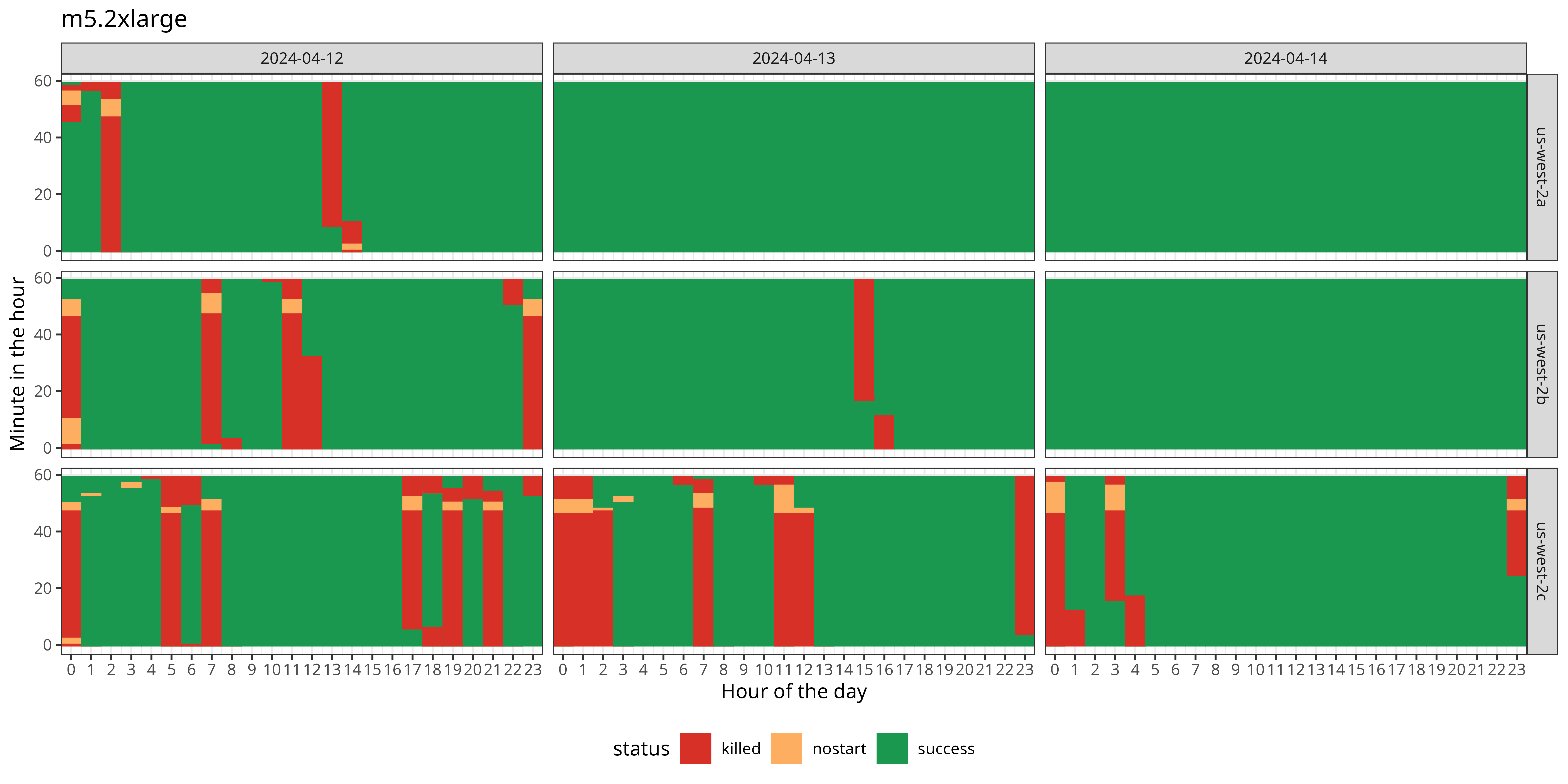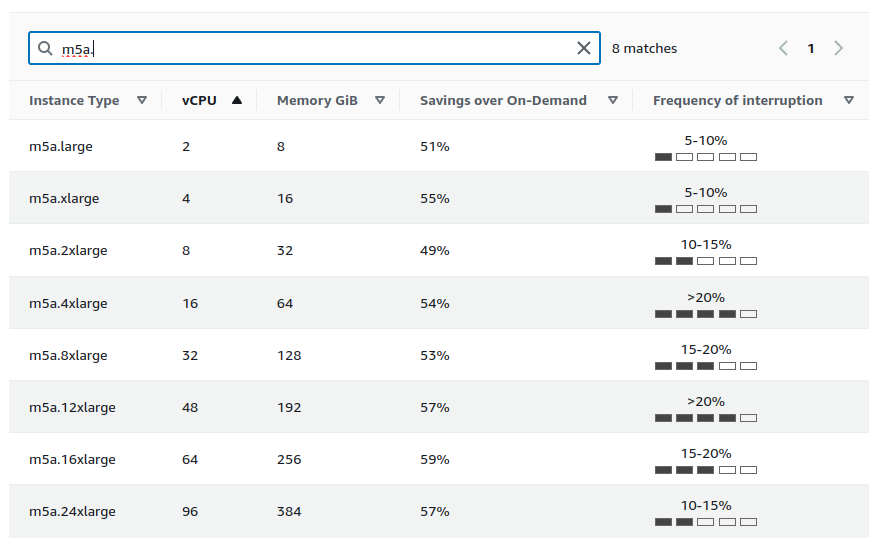We have been very satisfied users of the Spot Blocks for Defined-Duration Workloads at Amazon Web Services (AWS), which allowed us to pay a premium on spot prices not to be terminated for a defined time period -- an awesome feature for ML model training batch jobs.
Unfortunately, this feature has been deprecated in 2021, officially phased out at the end of 2022 for existing customers as well, but somehow it seemed to be working fine until Q1 2024 ... when suddenly the run instance API started to throw errors on the related field, and we also started to face many new spot interruptions.
So we looked around how to find instance type/region/availability zone/bid price combinations to minimize the risk to be interrupted, and hereby we summarize what we have found.
Bidding #
An obvious and naive solution in the past was bidding higher on the spot instances, but as AWS phased out bidding in 2018, this is not an option anymore.
The promise of this change was fewer spot interruptions, but unfortunately at the cost of less (actually: no) control. So we needed to look further.
Spot Instance advisor #
Although AWS provides the Spot Instance advisor to check on the frequency of interruption of the instance types in all AWS regions, it is fairly limited in a number of ways:
- The data presented is not real-time, but based on the previous month's observations. Although this is a valuable and useful information as a baseline, spot instances are reclaimed based on demand, so patterns might change from time to time, and more current data would be much more beneficial for risk assessment.
- Similarly, the data is aggregated over a month, and we suspect that there are differences in termination rates e.g. on weekdays VS weekends, or day/night etc.
- The frequency of interruption is categorized into the ranges of <5%, 5-10%, 10-15%, 15-20% and >20%. Although this is already a helpful signal, but there is a huge difference between 0% and 5%, similarly between 20% and 100% — see on that latter below.
- There is no breakdown within a region, e.g. looking at the differences between the availability zones might help better allocation of spot instances.
We could still run a few scenarios and check on the differences between regions, also how the instance size might affect the termination rate:
Despite our expectations, the average rate of termination for larger machines is not higher compared to mid-size instances. We expect this might be due to the spot reclaim algo at AWS is less likely to terminate a node taking up a(n almost) whole host server in favor of new smaller requests. More data would be useful to check on this hypothesis, but looking at a few instance families suggest that mid-size machines are affected the most by spot instance termination.
Again, this is already useful, but as per above, we wanted to dig deeper!
Discovery #
We suspected that there should be large differences in spot termination rates between availability zones within the same region due to sometimes experiencing huge variation in spot instance prices between AZs, and also getting more and more spot instance termination notices from specific regions and availability zones.
To confirm the above suspicions, we tried to run a few instance types
in parallel in all availability zones of the us-west-2 region using
an infinite loop as per below:
- Start a node and log if the run request was successful or not (due to insufficient capacity).
- Wait for the job to run for 1 hour without interruption, or log the termination notice.
- Terminate either on the notice or after 1 hour.
We started with the r7i.2xlarge instance as previously experienced a
very high (much higher than >20% as reported by the Spot Instance
advisor) termination rate in the us-west-2b availability zone (or whatever it is called in your
AWS account):

The status of r7i.2xlarge spot instances started in us-west-2
(data collected an visualized by Spare Cores)
The data collection started midday on April 10, and although we had a
few hours logging issue in the afore-named region, it's clear that
except for 2 healthy runs, the instance was either not available to
start a job, or got killed within a few hours at us-west-2b.
We understand that this might be due to the large demand in that availability zone -- due to the price differences based on our SCD data collection:
SELECT
price.observed_at,
zone.name AS zone,
price
FROM
server_price_scd AS price
LEFT JOIN zone ON price.zone_id = zone.zone_id
WHERE
price.server_id = 'r7i.2xlarge'
AND allocation = 'SPOT'
AND price.region_id = 'us-west-2'
AND price.observed_at >= '2024-04-01'
AND price.observed_at < '2024-04-15'
ORDER BY 1, 2;

The spot prices of r7i.2xlarge per AZ in us-west-2
(data collected an visualized by Spare Cores)
So although spot r7i.2xlarge instances are the cheapest by far in
the us-west-2b availability zones, it doesn't make any sense to try
to run it there, as either capacity will not be available, or your
instance will likely be killed withing a few minutes or hours.
Honestly, we don't understand why it makes sense for either AWS or the customers.
We also checked on other instance types to see if it's specific to a
single instance family and/or size. For example, the m5 instance
family was reported to have 15-20% or >20% frequency of interruption
as per the Spot Instance advisor, so very similar to the above
described r7i instance, but in practice, we saw very different
results:

The status of m5.large spot instances started in us-west-2
(data collected an visualized by Spare Cores)

The status of m5.2xlarge spot instances started in us-west-2
(data collected an visualized by Spare Cores)
The 15-20% rate appears to be indeed correct for these instance types, but it's possible to decrease that with the right AZ selection.
Takeaway #
Unfortunately, spot instance termination is happening at higher or lower frequency depending on the instance type, region, and definitely the selected availability zone as well -- but other than trying to pick a combination to reduce the risk of unwanted termination, you cannot eliminate it.
The Spare Cores team is dedicated to continue collecting data on detailed termination rates and publish these results from time-to-time, we are also looking into similar options at other vendors, but since it seems that users of spot instances totally lost control (either by bidding or paying premium) to reduce termination risk, applications are better run on on-demand instances or be prepared to checkpoint and gracefully restart within 2 minutes (30 seconds at GCP).

